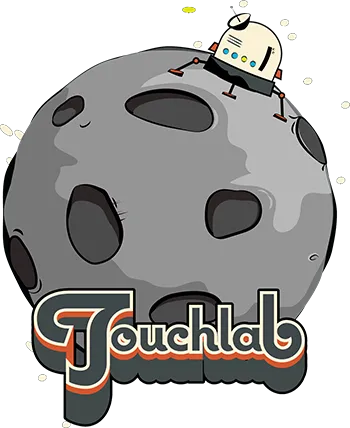Multiplatform Compose Animations
Group of libraries to help you build better animations with Compose Multiplatform
Usage
kotlin {
// Source set choice will depend on platform, but for commonMain
sourceSets.commonMain.dependencies {
implementation("co.touchlab.composeanimations:easing:1.0.2")
implementation("co.touchlab.composeanimations:value-animator:1.0.2")
}
}
About
Goal
The main goal of this project is to help you build animations with Compose Multiplatform. The Compose animations API provides a rich animation API to handle state changes, but some cases require to implement some boilerplate code.
What’s Included?
- Easings - A library with 30 different easings to control the speed of your animations
- Value Animator - API that provides you the same functionality from Android ValueAnimator, but using only compose methods
Why?
Compose animations are mainly focused on state changes. If you want to animate a value from X to Y, you need to:
- Create a state to control the state (and move from current to target)
- Use the
animatefunction (which requires a coroutine scope and posting the value to some state);
Another limitation is when you have multiple values to animate through. In this case, there is no built-in solution to handle this case. Most APIs have similar syntax to Compose methods to make it more intuitive for you.
API
animate*AsState
Animate a value from X to Y and return the value as a state
animateFloatAsStateanimateIntAsStateanimateDpAsStateanimateSizeAsStateanimateOffsetAsStateanimateRectAsStateanimateIntOffsetAsStateanimateIntSizeAsStateanimateColorAsState
Signature:
@Composable
fun animateFloatAsState(
initialValue: Float,
targetValue: Float,
startDelay: Long = 0,
animationSpec: AnimationSpec<Float> = spring(),
): State<Float>
If you are using InfiniteTransition, compose already provide built-in methods for this.
animate*ValuesAsState
Animate through all values provided as arguments
animateFloatValuesAsStateanimateIntValuesAsStateanimateDpValuesAsStateanimateSizeValuesAsStateanimateOffsetValuesAsStateanimateRectValuesAsStateanimateIntOffsetValuesAsStateanimateIntSizeValuesAsStateanimateColorValuesAsState
Signature:
@Composable
fun animateFloatValuesAsState(
vararg values: Float,
startDelay: Long = 0,
animationSpec: AnimationSpec<Float> = spring(),
): State<Float>
These methods are also available for InfiniteTransition. Signature:
@Composable
fun InfiniteTransition.animateFloatValues(
vararg values: Float,
animationSpec: InfiniteRepeatableSpec<Float> = infiniteRepeatable(animation = tween()),
label: String = "MultipleFloatAnimation",
): State<Float>
ValueAtFraction
Interface to implement animation progress for unsupported types. It can be used on
animateAsStateandanimateValuesAsStatemethods.
Signature:
fun interface ValueAtFraction<T> {
operator fun invoke(
fraction: Float,
initialValue: T,
finalValue: T,
): T
}
Example:
val floatAtFraction = ValueAtFraction<Float> { fraction, initialValue, finalValue ->
initialValue + (finalValue - initialValue) * fraction
}
@Composable
fun AnimationTest() {
val state by animateValuesAsState(
values = floatArrayOf(0f, 1f, -1f, 4f),
getValueAtFraction = floatAtFraction,
startDelay = startDelay,
animationSpec = animationSpec,
)
}
The lib already provide a few implementations for types previously mentioned:
val ValueAtFraction.Companion.Float: ValueAtFraction<Float>
val ValueAtFraction.Companion.Int: ValueAtFraction<Int>
val ValueAtFraction.Companion.Dp: ValueAtFraction<Dp>
val ValueAtFraction.Companion.Size: ValueAtFraction<Size>
val ValueAtFraction.Companion.Offset: ValueAtFraction<Offset>
val ValueAtFraction.Companion.Rect: ValueAtFraction<Rect>
val ValueAtFraction.Companion.IntOffset: ValueAtFraction<IntOffset>
val ValueAtFraction.Companion.IntSize: ValueAtFraction<IntSize>
val ValueAtFraction.Companion.Color: ValueAtFraction<Color>
If you create custom types, you can also provide them as extensions from the ValueAtFraction companion.
Easings
The easing module contains 30 different easings to control the speed of your animations. For more information, check
the easing website, we’ve implemented all the easings available there.
Example:
@Composable
fun MyAnimatedComponent() {
val value by animateFloatAsState(
initialValue = 0f,
targetValue = 1f,
animationSpec = infiniteRepeatable(
animation = tween(
durationMillis = 1500,
easing = EaseInCirc, // Change the easing here
),
)
)
// Use your animated value
}
About Touchlab
Touchlab is a mobile-focused development agency based in NYC. We have been working on Android since the beginning, and have worked on a wide range of mobile and hardware projects for the past decade. Over the past few years, we have invested significantly on R&D for code sharing technologies. We believe strongly in KMP’s future and are making the Kotlin platform the focus of our business.
What We Can Do For You
We have made KMP the focus of Touchlab. We had possibly the first KMP* app published in the iOS App Store, and have extensive experience in building libraries and the Kotlin platform, including contributions to Kotlin/Native itself. We can establish and accelerate your adoption of shared Kotlin code. See touchlab.co for more info.
License
Copyright 2024 Touchlab, Inc.
Licensed under the Apache License, Version 2.0 (the “License”); you may not use this file except in compliance with the License. You may obtain a copy of the License at
http://www.apache.org/licenses/LICENSE-2.0
Unless required by applicable law or agreed to in writing, software distributed under the License is distributed on an “AS IS” BASIS, WITHOUT WARRANTIES OR CONDITIONS OF ANY KIND, either express or implied. See the License for the specific language governing permissions and limitations under the License.
